Providing thorough, relevant and constructive script coverage on a feature length script is no easy task, so when we posted the challenge last month, we had no idea what to expect. To our delight, the submissions were plentiful and impressively insightful.
And now – after many a read-through – we have finally found our one winner and two runner-ups.
But before we get to the actual submissions, I’d like to take a moment to reflect on the importance of script coverage in the screenwriting process; the importance of second opinions and fresh eyes. As we were reading through synopsis after synopsis it became very clear that different readers responded to different things. The overall themes and story concept remained the same, but the character relationships, the rules of the Virtual Reality world, the motivations, the history – those seemed to materialize differently depending on the reader. And that’s an incredibly valuable insight to get as a writer, because then you know exactly which parts of the script you need to work on in order to produce that airtight final draft.
With that in mind it should also be noted that ‘script coverage’ can serve several different purposes. It can be the quick at-a-glance coverage used by studios to consider a recommend or a pass, based on a number of industry standard parameters. It can also be the meticulous read-through focused on identifying inconsistencies, typos or weak/strong plot points. And it can be more of a script consultation, which recommends specific changes to certain parts of your story that needs work, perhaps even puts your script into a pop-cultural context and suggests ways to make it stand out or fit in – depending on what you’re going for.
For this contest – a script coverage exercise focused on Before I Wake – we received all of the above. So without further comment, please enjoy the winning submissions below. You can still download the script here, if you would like a 128-page point of reference. Thanks to everyone who submitted!
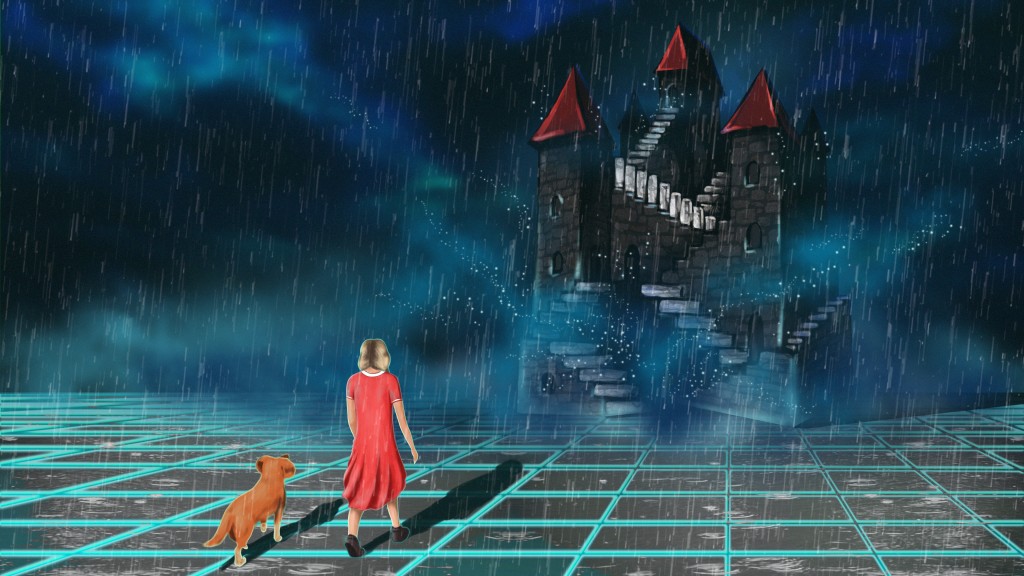
WINNER: JAMES SADLER
LOGLINE: The daughter of a widowed soldier becomes intertwined in a complex plot involving an elderly virtual reality tycoon’s veiled experiments with artificial intelligence. As she becomes more embroiled into the action, she is thrust into a race against time to not only save the virtual world from a catastrophe, but also learn the secrets of her mysterious past.
SYNOPSIS: Two small girls, SARAH and NANAKO, run from the SMOKE RAVEN, trying to escape their pursuer by rapidly changing their virtual environment and slipping through improvised portholes. Thinking they have lost the raven, they play around on Nanako’s sailboat sanctuary before Sarah suddenly convulses and vanishes, leaving Nanako alone.
JEAN BAPTISTE sits at his desk and informs Sarah that she has failed him. Ignoring her pleas, he coldly terminates her with the push of a button, her body disintegrating into virtual particles.
During a virtual war game, HANNA TOLEN, a fiercely independent and mischievous 12-year-old wise beyond her years, keeps out of sight to watch the battle ensue. Although her K-9 companion, RAGS, urges her to be careful, Hanna is engulfed in the game, longing to join in.
Meanwhile, Hanna’s father, CONRAD, is leading his squad in an intense gun battle against a rival team. His squad mates, OKU and JIMMY, are taking fire from SAM, and his team, they recuperate for one last siege. However, when the squad is about to make their move, Hanna accidentally makes her presence known, and causes the game to grind to a stop.
STAN, the game referee, informs the squad that they are in violation because of Hanna’s illegal entrance in the game, and thus have to forfeit. However, both squads decide to keep playing, despite Hanna still being there. Upset at yet another rebellious hack by his daughter, Conrad shuns Hanna, but reluctantly allows her stay.
As the battle continues, Hanna wows everybody by levitating and using a fireball to level the competition. Although this extreme display of power and skill impresses all who witnessed it, when looking to her father for a sign of acknowledgement, he brushes her aside, still upset with her. They end the game and log out of the virtual reality to return to real life.
Back in reality, and in their home, Conrad further scolds Hanna, and then tells her to go visit her grandfather. As Hanna makes plans with Rags to go back in to the VR grid, Conrad escapes into a virtual memory where he visits with his deceased wife, JEANNIE.
As OKU, JIMMY, SAM, and the other players gradually adjust back into reality, a TV interview with CLAUDE, an associate of Baptiste, reveals the occurrence of a catastrophic “Crash” that killed millions of people years ago, and that people are hesitant to use the VR that Baptiste creates because of it. However, Claude assures that it has never been safer to use now.
Later on, Hanna visits her grandfather, RANSOM, who urges her to stop going into the virtual world against her father’s wishes. Despite his warnings, she is headstrong and determined, reminding him of Jeannie when she was alive. Again, he emphasizes that reality is real, while virtual reality is just a “dream world,” and that she should be more careful.
In Baptiste’s VR office, Baptiste watches as Nanako is engulfed by the Smoke Raven. In a hospital bed in reality, a NURSE watches as Nanako’s body in the real world dies, and she is “uploaded” into virtual reality as a from of artificial intelligence.
After making sure that Conrad is gone, Hanna sneaks back into the virtual world, first going to “Kidverse” and then creating a porthole out into the pirate server grid. Here, she is creating a castle, where her and Rags go to visit.
In her virtual sanctiuary, Nanako sits in her sailboat, roaming over a hologram of the opening scene with Sam, but is interrupted by Baptiste, telling her to do her exercises. As she is lead through a hallway and hesitates to open a door marked “DO NOT OPEN,” Claude comes in to inform Baptiste of a press conference. On his way out, he begins to glitch and spasms, revealing his body in the real world being that of an incredibly old man, barely hanging on to life. Once he is stable again, he continues about his business.
In Hanna’s castle, she meets MELIES, a mysterious figure surrounded by ghosts of the dead “Crash” victims, who offers Hanna a job, because of her unique skills. Although his proposition seems shady, and Hanna is reluctant to accept due to her father’s over-protective nature, she expresses interest after he mentions she may discover what happened to her mother. After this, Baptiste and the Smoke Raven sinisterly discuss finding another girl for his experiments.
After accidentally witnessing her mother’s death in the “Crash” when hacking into a virtual memory that Conrad was in, Hanna becomes more determined to find out the cause of it all, and decides to accept Melies’s job offer. Meanwhile, Baptiste holds a press conference and informs the public of a fund-raising gala being held at his tower to support further development of Baptiste’s software.
Hanna sneaks out of the house, ignoring Rags pleas for her to stay or for her to take him with her. Shortly after this, Conrad discovers Hanna is gone, but she has already reached her destination: Baptiste’s tower. She is escorted into a hospital room by the Nurse, and is put into the virtual world where she meets Baptiste, the Smoke Raven, and Nanako. As this is happening, Conrad is frantically calling around for Hanna’s whereabouts, and eventually calls Oku and Jimmy out of a game for their help. It is revealed that Melies’s “job” was for her to be drafted into Baptiste’s experiment, so that she could infiltrate and hack into his software.
As Conrad, Rags, and his squad attempt to track down Melies, Hanna and Nanako bond and become allies with the goal of destroying Baptiste once and for all. As they make their plans, Conrad and the gang find Melies. It is revealed that Baptiste’s experiments were to try to upload his dying wife, MAYA, into virtual reality as an AI so they could be together forever, but things went horribly wrong when the Smoke Raven, a security software, went haywire, not only destroying Maya, but eventually turning into a storm that caused the “Crash.” Melies also reveals that he is an AI created by Maya before she died, and that he is very lonely because there is no one else like him in existence.
Conrad and the squad make plans to infiltrate the gala to get Hanna back, while Hanna and Nanako makes plans to break into Baptiste’s office to steal valuable information. When they do, they see holograms that reveal Baptiste’s true motives, that the Smoke Raven was the “Crash,” and Nanako discovers that he turned her into an AI, thus making her unable to live in reality again.
Later, during the gala, Conrad and his squad, with Melies’s assistance, get into the tower and go to work trying to find Hanna. Meanwhile, Hanna and Nanako try to hack into Baptiste’s software, going through the “DO NOT OPEN” door to hack into the system.
During the reception, in a lush VR ballroom, Baptiste begins to glitch and convulse as he did before, except this time, his body is rapidly deteriorating. During the confusion, Conrad and his squad are able to get into Baptiste’s office and restricted floors, while Hanna and Nanako hack in and shut down Baptiste’s software system.
As Baptiste lay dying, the Smoke Raven detects the breaches by both parties, and leaves him to die. Conrad comes in and watches as Baptiste dies, both in reality as his body dies and in VR as he deteriorates into particles, unable to upload himself into an AI before dying.
With the system down and Baptiste dead, this leaves the Smoke Raven free to go on a rampage, with the potential to materialize into another “Crash” storm. In a climactic fight, everybody mounts a defense against the Smoke Raven, which threatens to engulf the city. During the fight, Rags is killed, but Melies and Nanako, bonding as fellow AIs, are finally able to defeat the Smoke Raven and save the day. This act allows the ghosts following Melies to be free, and concludes with the ghost of Jeannie embracing Conrad and Hanna for the last time. This experience brings father and daughter together, who embrace lovingly.
Six months later, the squad are back in the VR war game, and Hanna is fighting alongside Conrad, Oku, and Jimmy as part of the unit, finally accepted by her father.
COMMENTS AND GRADING SCALE:
5 – Excellent
4 – Very Good
3 – Good
2 – Fair
1 – Poor
STRUCTURE: Although I was able to understand what was going on clearly, despite the complex nature of the story, I felt that the constant switching from reality, to VR, to flashbacks was a bit tiresome. I think the main contributor to the problem was the fact that this switch happened so often, which could confuse and frustrate readers. Be that as it may, the action was clear and concise, which made it easier to read than most script of this nature.
GRADE: 3
CONCEPT: The interplay between all of these fantasy worlds was pretty cool, and most certainly has the potential to create beautiful imagery and an immersive film-going experience. That element alone make the script interesting, but the introduction of the human relationships within the film (specifically that of Hanna and Conrad) brings the film a more human element, which I thought was a nice touch. This mix of elements could appeal to a wide variety of audiences, with guys who dig sci-fi action, and those who enjoy family oriented stories getting something out of it.
GRADE: 4
CHARACTER: Although all of the characters had their motivations and goals very clearly presented, I couldn’t help but feel a little detached from the characters. I think this is due to lack of character development, in that each character tends to be stereotype with a little twist, rather than full fleshed out individuals. This is more prominent in the supporting characters (such as OKU and JIMMY), but is evident in the other characters, which is dangerous to the film’s overall success. This is especially important to address because one of the main driving forces of the film is love and relationships, and the thing that makes each of these subjects special are the people involved, their specific traits, how they interact or differ, etc. The characters, as presented, have a lot of potential to be more interesting and individual, rather than pawns in the game to move the plot along.
GRADE: 2.5
DIALOGUE: I have similar comments on the film’s dialogue as I did in my CHARACTER notes, in that I feel like there is potential for it to be more intimate and revealing, rather than used as nothing but a device to advance the plot. Again, this is a film that is not just an action film, but a film that chooses to investigate the relationship of complex characters, so more attention should be made on making the dialogue not only organic to the situation, but also in revealing character and even underlying themes in a subtle way. As it stands now, the dialogue is rather stale, where motivations are revealed also verbatim in some lines (ie, and I’m paraphrasing here, “I have to do this to find out about my mother’s death” and other lines of the sort), which is a poor way to use dialogue. Like I said with my CHARACTER notes, dialogue should be revised to make things more intimate and revealing, rather than as a pawn in the game.
GRADE: 2.5
THEMATIC CONTENT: Although this is primarily an sci-fi/action script with virtual worlds, gun battles, etc., I was able to detect a few themes that may or may not have been intended by the writers, which I responded very positively to. I really enjoyed how the film always came down to being about Conrad and Hanna’s relationship, and how the death of Jeannie tested each of them as individual characters. In the end, the themes of love, acceptance, letting go of the past, and other universally relatable themes shined through all the explosions and virtual reality stuff. I also liked how the characters of Conrad and Baptiste both juxtaposed and were similar in how they dealt with the death of a loved one, which emphasized these themes in an interesting way. I only hope that these themes are expressed more intimately and in a deeper way, rather than an overt attention spent on the whole “virtual reality vs. reality” thing, and over reliance on action over emotions.
GRADE: 3.5
GENERAL COMMENTS: This script has a lot of potential to be really special, but is hindered by a few common problems. The main problem (besides the ones I mentioned before about emphasis on action over emotion) is that the film suffers from what I refer to as the “And then..” method of storytelling. To me, instead of the film’s events intricately weaving in and out of each other organically, the script went on and on and on (“So this happens, and then this, and then this, and then this, and then this…” ad infinitum), which made it tiresome to read for 128 pages. It also tended to rely too much on revealing information through flashbacks and explicitly saying key plot points, rather than having things play out. Be that as it may, I found the script to be really cool, overall, and presents a unique spin on the tired “virtual reality action flick” sub-genre that has gained popularity recently.
RECOMMENDATION: Yes, I would recommend it, based on the strength of the concept, but would suggest further revisions to increase the project’s potential. Otherwise, I think this could make for an entertaining, thrilling, yet moving and personal film.
CONTACT JAMES SADLER: If you wish to employ James’ script reading services, you can contact him here.
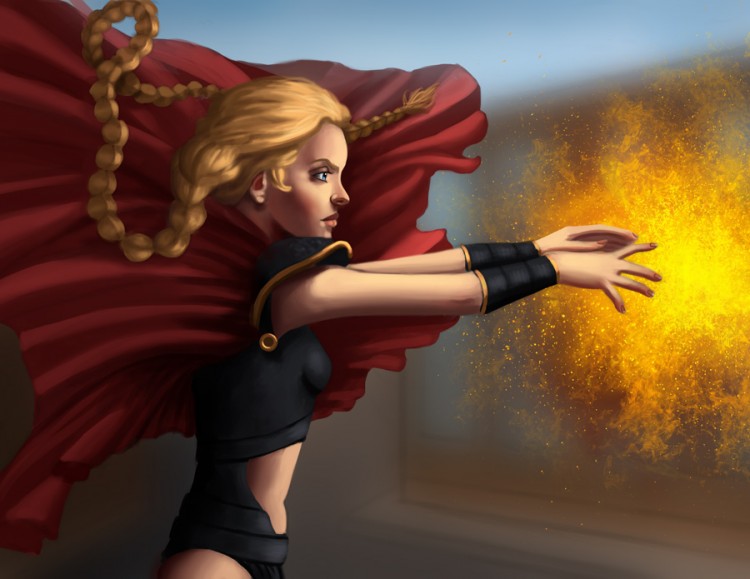
RUNNER-UP: NADA KOLLOVA
LOGLINE: In the world where real and virtual lives blend, teenage girl has to fight real and virtual enemies in order to find out what happened to her dead mother.
STORY COMMENTS: This story gets off to an intriguing start, where we are immediately introduced to the ordinary world of the characters and the rules under which this world operates. The antagonists in this world are represented by ‘smoke raven’ (p.1) and Baptiste (p.4), who for some reasons ‘terminate’ little girls. The dark world smoothly transitions into a game sequence in virtual reality (VR), where the main protagonist, 12 year old girl Hanna, has the proper hero’s introduction (p.5) by blasting everything with her ‘own personal cyclone of bullets’ showing off her impressive skills. This part is full of action and funny and together with the setting well underlines the sci-fi/action-adventure feeling tone of the piece.
After the energetic start, the story then moves through several sequences that do not contribute much to the story and slow down the promising dynamics from the beginning. First, Hanna meets her grandpa when we don’t learn anything else what we already know (Hanna’s mom died in suspicious circumstances and pirate servers are dangerous). Then we continue to the ‘Kidverse’ sequence, where the daily life of common people happens. Although visually appealing, its main purpose is just to advertise the possibility of the VR (spelling bees, bluebird offering tutoring). As very common in teen girls’ stories, we also meet mean girls, who are jealous of the Hanna because the popular guy takes interest in her. In addition, the flashback scene where Hanna picks-up her dog Rags as a puppy seems only to be inserted to evoke the proper sentimental feeling. Similarly, the flashback where Hanna picks up her (virtual) dog as puppy seem to belong to the same sentiment evoking category.
Due to these sequences the overall pacing slows down and the call to action does not happen until p. 43, when the goal is declared and Hanna decides to take the job to get into Baptiste main tower and to find out what happened to her mother. The real tension starts again at p. 54 when Hanna enters the tower and we know there is some sort of sick experiment going on involving little girls. The pressure then raises steadily until midpoint, when we find out how are the girls killed – to be transferred from their body form into A.I. The underlying backstories involving flashbacks of Hanna’s mom’s death, the Crash, Baptiste creating raven, are surprising, well interwoven and continue to raise pressure.
The ending is the most dynamic part with skillfully graduated tension achieved by parallel montage of actions (girls getting into the main room to disconnect the shield / saviors coming to rescue / Raven chasing them / Baptiste trying to complete his dangerous plan). These are accompanied by backstory flashbacks providing the necessary feelings of time pressure and danger hanging over the main protagonist. However, the ending and emotional pay-off is affected by the logical arguments lying behind the motivation of the characters. If Baptiste’s behavior was motivated by love (to stay with the love of his life, Maya, forever) and because of that he needs to transform from the living form into A.I., then it remains unclear why he needs little girls to test it? Why doesn’t he ‘use’ adult women that would be more similar to Maya? And even if the test would be successful, isn’t Maya already dead for a long time that it does not matter anymore? Nanako made the transformation so the transition was successful in a way, so why did Baptiste need Hanna again? Why are people going crazy when transitioning into A.I. anyway? Too many questions remain unanswered for the viewer to enjoy the very interesting action part at the end of the story.
The main protagonist is portrayed as the cool girl well equipped for the living in the modern technology world that is full of predators as in every other world. Her motivation is believable, but her story of half-orphan investigating how the mother died is not an intriguing hook. She does have some interesting skills and is proactively pursuing the goal, but the final resolution is not brought by her as the main protagonist, but her helpers Nanako and Melies, who manage to destroy the raven. In addition, the character’s growth is not extensive. This is not an outsider becoming savior, or character growing internally by overcoming some sort of personal barrier. Hanna’s point of view does not change much from the beginning toward resolution and although she learns about her mother, she does not discover much about herself. The internal conflict typically stands in opposition with external conflict and the hero’s weaknesses are typically exposed and tested by antagonist. At times Hanna seems to be too perfect. Yes, she is stubborn and does not listen to her father, but that only makes her look more cool. Great heroes are like all human beings, they all have weak points in addition to their strengths. They struggle within themselves. Now we may argue that internal conflict is not crucial for action/adventure film for teenagers, nevertheless the serious moral message (no love can last forever) is present, but it is carried out by the antagonist and her father who find that out at the end of the story. Hanna then remains rather static and for this reason is at times overshadowed by supporting characters (Baptiste, Nanako, Melies)
The villain, as mentioned, is a strong and fight-worthy opponent. His motivation why he needs a girl for the A.I. transformation is not clearly explained, but the revelation that it was the good intention to stay with his love forever was what brought the misery to him and to the world makes him an interesting character. He had to create raven and send him to kill Maya when things went wrong and this carries strong emotional appeal. The rest of the supporting characters also represent interesting and relatable archetypical types – Melies (mentor), raven (shadow), ghosts (supernatural interventions), Jimmy & Oku (helpers), etc., which makes them rather easy to distinguish. However, the number of characters is rather excessive and not all of them are crucial for progress of the story (Ransom, Max). On the other hand, they are well characterized even on the short space provided, of which Sam is the most remarkable providing the comical relief.
Although well distinguished in terms of age and personality, the dialogue does not provide great difference among the characters, who all seem to use similar way of speaking. The dialogue usually does reveal new information for the story but its quality varies greatly during the course of the story. On few occasions it is ‘on the nose’ lacking any subtext: “Keep following your heart. Listen to your gut. Never look back.” Or “CONRAD: Do you think she’s suffering? Jeannie? MELIES: I don’t know. But all I feel from them is emptiness. They are lost, Conrad. And together, perhaps, we will find a way to release them.” On other occasions, however, it provides interesting insight: “Regulation is the price of comfort and safety. People are usually willing to give up small freedoms in exchange for comfort.”
The setting of the story is original and offers many possibilities for memorable visual portrayal but would apparently require employment of great deal of CGI to bring the story to life. Alternatively, if the amount of subplots and elements present in the story were intended more for series than a feature film, animation could also be a solution (the art concept as well as the story itself does suggest anime influence). The VR world outlined in this script has provided some original visualization of known concepts – pc virus portrayed as smoky raven, violation messages and emoticons in the game, and firewall brought down by fire. The setting also provides attractive visual metaphors, e.g. Baptiste shown as god in ‘god’s office’ as he in fact is playing god deciding who should live and who should die. Similarly, few children’s fantasies were also brought to life (having my own castle or ship).
On the other hand, the depiction of the environment causes confusion regarding organization of elements in the space. For example, the transition from ‘reality’ into VR is not always clear, which makes our orientation in space difficult. Page 31 depicts virtual reality within virtual reality when Claude and Baptiste are watching Nanako on the screen and Claude also coming from the screen (the same one?). Also, due to amount of various places the characters have to go through, it is hard for the audience to distinguish who is where and doing what. Further example is description of how the ‘giant spaceship’ is related/attached to Baptiste office. And how is the ‘giant golden tree’ implemented into the spaceship? Also, too many individual stages girls have to go through to get into Baptiste office prevent us from understanding of their organization within the Baptiste tower/VR offices. Despite the fact we are in VR where everything is possible, it could be harder to grasp for production and maybe further description or color distinguishing of individual areas would help to solve the confusion.
Among other elements affecting the clarity of the script (besides the character’s motivation affecting the ending as mentioned above) there are further questions that remained unanswered:
- Why exactly did Sarah have to die? What is it exactly that ‘compromised her’? Was it her inability to fight raven? But raven was created to control her (and Maya) not vice versa?
- Why did Maya create Melies? Was it to keep her memory alive? But he was individual ‘person’ and he did not store Maya’s personality.
- Why does raven need a ‘red parachute’ (p.78) to fly away from twisting staircase Hanna created? Can’t he fly as shown before and after during the final fight?
- How can raven kill people hooked on VR like in actual world?
As result of these ambiguities, the focus is aimed at answering additional questions what/where/how/why instead of ‘experiencing the story’.
Regarding the overall emotional appeal, the story also evokes an influence of various notoriously known films – people who die in VR also die in real life (Matrix), extraordinary places created by imagination (Inception), violent games played for audience amusement (Hunger games) and also anime-adventure according to story and concept art provided. The setting of this world is quite unique and the script contains trends very relevant for today’s world – living virtual life and returning to real one only to fulfill the basic needs and responsibilities. Also, the story also addresses some interesting issue – does end really justify the means? Love as the main reason for the villain doing bad things is rather original. However, the plot does not contain enough unique features for successful marketing, mainly due to:
- Average story concept related to:
- The hook of the story – girl to reveal who killed her mother
- Unclear target audience – the main character narrows the audience to younger females but the overall theme (eternal love/life) might be harder to grasp for younger audiences. In addition, if portrayed in the current ‘anime’ style, this might limit the audience even more – anime is aimed at predominantly male audience (although the female fan base is still growing)
- Subplots – foreseeable romantic motifs (Jimmy and Oku, Max and mean girls vs Hanna, Jeannie and Conrad’s flashbacks), grandpa Ransom limited contributed to the story
- (Present material could be considered for TV series, where this plots could be more elaborated to gain bigger purpose for their existence (the ending also foreshadows sequel))
- The call for action and tension in the character’s journey coming very late
- Insufficient clarity (space orientation, motivation, etc.)
- Length of the script
- Excessive budget required for production of this script (if CGI scenario)
This is a story taking place in an original and interesting place with standardly handled characters and very dynamic ending. However, further elaboration would be required in order to improve its commercial appeal.
Additional points to consider:
- 81 states:” We see the moment she was uploaded, her body on the same bed as Nanako and Hanna dying before them.” I believe it was supposed to be Sarah, as Hanna did not die in this story.
- 72 – People hooked on breathing tubes might have difficulties to speak (Maya speaking to Baptiste)
SCRIPT RATING: Pass
CONTACT NADA KOLLOVA: If you wish to employ Nada’s script reading services, you can contact her here.
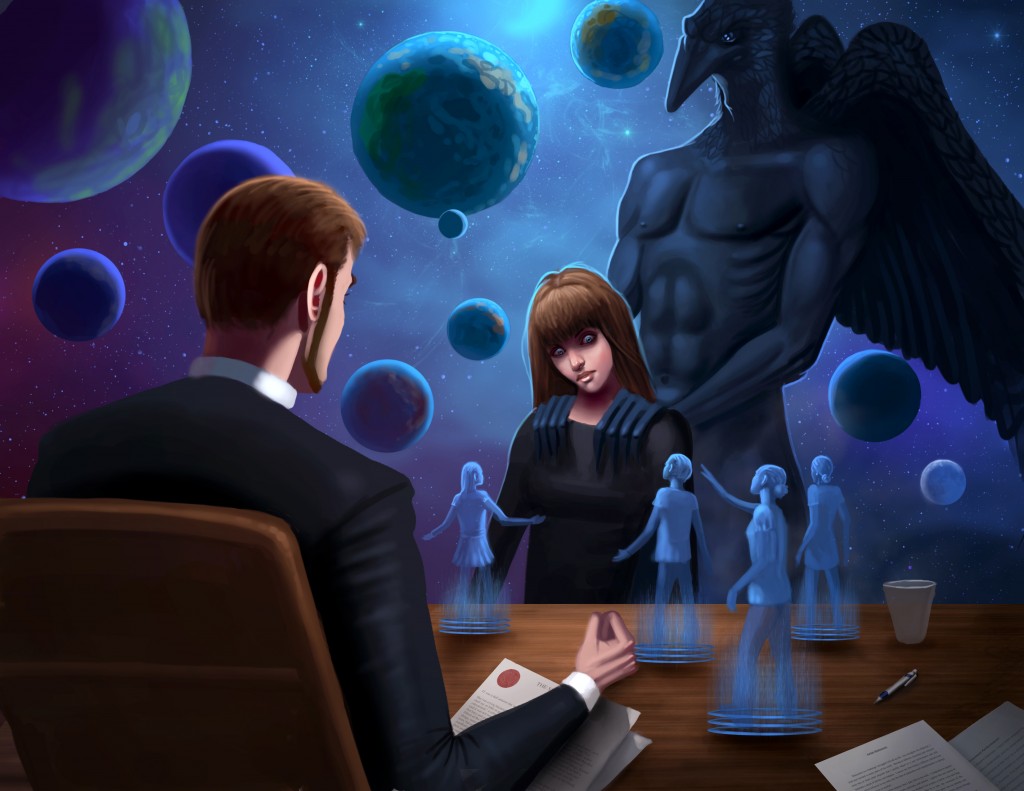
RUNNER-UP: MARIANO GEMIGNANI
CONCEPT/THEME: Flexibility is the key word here. Everything is possible within VR, and this plays out beautifully. Hanna and Nanako can do and undo as they please, seamlessly translating thought into action. This gives a feeling of flow which creates a strong sense of immersion. Creativity at its peak.
The attractiveness of this universe is definitely one of this script’s assets. While I was reading it the visualization of the images described was a true pleasure. I can see a huge potential for eye candy here. However, this vast creation has a few setbacks worth mentioning.
During the reading I had to make an effort to put the characters and their motivations into context. There is plenty of exposition surrounding events like “The Crash”, but no explanation of key facts such as how does the VR work, what’s its purpose, how do the characters interact with it, what are the dangers of dying there, etc. There is an urgent need for more information that would make the spectator more comfortable and smooth the introduction of the movie. The first sequence being as amusing as it is, it could easily be replaced by a sequence in which more background information is given.
On a deeper level, it took me a while to identify what was Hanna’s dramatic conflict. The force that pushes her to embark on the adventure is almost unnoticeable during the first pages of the script. There are hints of Hanna’s worries about her mother and her past, but these don’t show enough depth to trigger all the story’s potential.
I’d suggest rewriting the first act keeping in mind that including a scene in which the theme is clearly stated would be a huge improvement. Once the spectator knows what is Hanna’s quest and why this is important for her, everything that follows will fall in place. SPOILER ALERT: In the first scene of Guardians of the Galaxy, Peter Quill’s dying mom asks him to “hold his hand” and he doesn’t. In the end he overcomes his fear of trusting others and this is what triggers Ronan’s defeat. Theme stated and conflict established, all in one scene.
STORY: On the story level, there are a couple of comments to be made on structure. While I was reading the script, I couldn’t shake off the feeling that I was reading two scripts, one being very different from the other one. The fracture happens at the midpoint, when Hanna decides to accept the mission that Melies proposes.
The difference between the two parts of the script is evident specially in terms of pace.
Before the midpoint, the action lags. I found some scenes to be inconclusive in terms of what they left me as a spectator. I couldn’t really interpret them. I kept on thinking “How has this scene enriched my perspective? What do I know now that I ignored before?”. When this happens repeatedly, the script’s momentum takes a toll. It’s difficult to follow the action and there is a vague sensation of being lost, without proper knowledge of where the story is taking us. I consider the best example of this “disruption” the sequences of the first VR battle and the one involving Sarah’s death. These two are completely unrelated in immediate terms.
On the other hand, after Conrad and his crew crash the party and Hanna and Nanako start progressing towards the security system, the action never stops. Both group of characters progress to their goals, finding obstacles and struggling to arrive to their destination to coincide in an exciting final battle that leaves no loose ends. It would be great if the first half of the script could share this sense of continuity too.
As a potential way to fix this, I’d recommend analyzing scripts in which the story is perfectly threaded. I can think of at least two true masterpieces that do this. Aside from the purpose of improving this script and this writer’s craft, they’re also great to watch. I’m talking about The Usual Suspects and Basic Instinct.
As a second point for improvement I would have to say that the setup is excessively long. Melies proposes the mission in page 38. This means that, in footage time, a potential spectator has been sitting at a cinema for 38 minutes unsure of what the movie is about. This is definitely a big drawback. Just to clarify this, I’m not saying that everything should be said in the first ten pages. I try not to apply rigid rules to the art of storytelling. But even if the story is a masterpiece, 38 minutes of uncertainty simply feels like too much.
CHARACTERS: In my opinion, this is a part of the script which doesn’t need much work. Overall the characters are well established and developed. Hanna is a determined protagonist that is willing to go all the way to find out about the shaded areas of her past. In the same way, Conrad is willing to do anything as long as he can rescue her daughter. Baptiste is a good antagonist that shows determination in preserving his empire. Aside from Baptiste’s own personality, the tasks that Conrad and Hanna have to tackle are very, very challenging. This forces them to change, adapt, and meet in the end as different people, but still feeling related to each other.
As a minor point to improve, Conrad’s lines can come across as too blunt at times. It would be great if the writer could rewrite the script to add Conrad a bit of subtext. Sometimes silence can be more effective than words, and more often than not less is more when it comes to dialogue.
EVALUATION SUMMARY: Overall, I have to say reading this script was an enjoyable experience. It took me a while to have a full grasp of the universe, its rules and the context in which the story occurs. As a consequence, I wasn’t really rooting for Hanna and Conrad until I found out what was really going on. After everything was explained, following the story was a blast. The last battle is definitely one of the moments in which the tension was well built, leading to a wonderful climax.
However, I don’t think this should be the final draft. At the current state, the flaws this script has make it a very good draft to be reworked, rather than a sealed, completed product. I can definitely see that this story has potential to become a great story. Being a writer myself, I’m well aware of how demanding the writing process is.
I’d like to finish this review on a Hemingway quote I find extremely suitable for the occasion: “The only kind of writing is rewriting”
CONTACT MARIANO GEMIGNANI: If you wish to employ Mariano’s script reading services, you can contact him here.

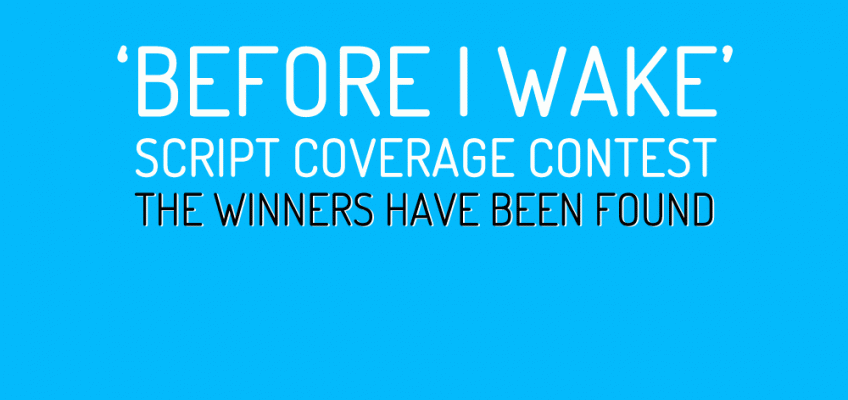


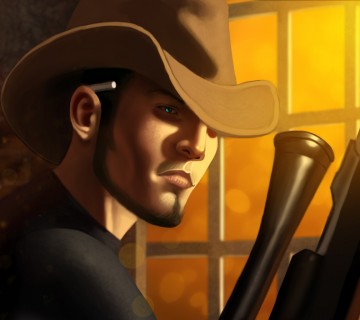

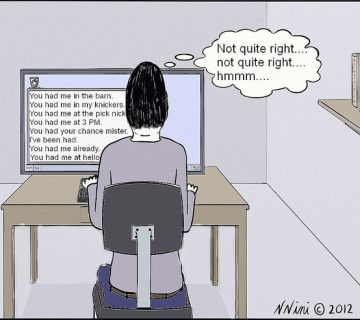


Join the Conversation →